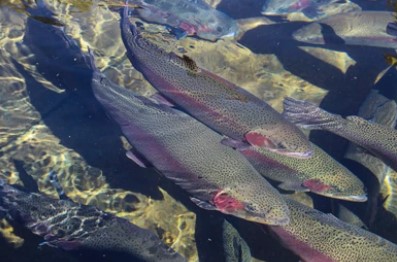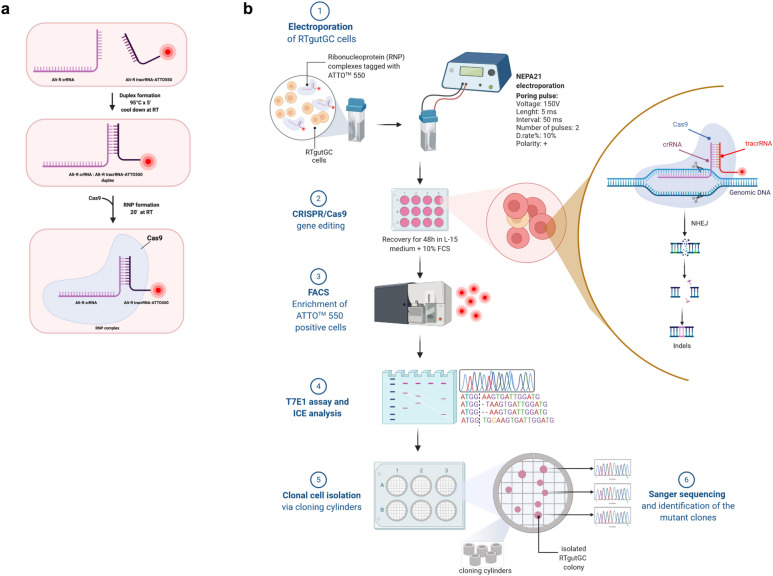Oncorhynchus mykiss, also known as rainbow trout because of its red stripes on the side of its body, belongs to the salmon family, Pacific salmon genus, and is rich in DHA, EPA, and vitamin B. It is an economically valuable food fish. The meat of rainbow trout is rich in unsaturated fatty acids, amino acids, and trace elements, which are beneficial to human absorption and nutritional balance and is very popular in Europe and America.
 Figure 1. The rainbow trout (Oncorhynchus mykiss) is a trout native to cold-water tributaries of the Pacific Ocean in Asia and North America.
Figure 1. The rainbow trout (Oncorhynchus mykiss) is a trout native to cold-water tributaries of the Pacific Ocean in Asia and North America.
Rainbow trout are farmed on a large scale, but the effects of fish diseases and their slow growth rate have led to unmet market demand for rainbow trout. Using genome sequence and molecular biotechnology to target and edit rainbow trout genes to breed new species with high resistance and high growth rate is currently a hot spot in rainbow trout biology research and commercial selection.
As a world-renowned provider of fish gene editing services, Lifeasible has a mature and well-established CRISPR/Cas9 technology platform to provide you with one-stop Oncorhynchus mykiss gene editing services.
CRISPR/Cas9 technology enables rapid and accurate targeted mutagenesis within the genome of rainbow trout cells. Among them, CRISPR/Cas ribonucleoprotein (RNP) complex technology mainly uses Cas9 protein and crRNA:tracrRNA double-stranded bodies to form RNP complexes, which are then delivered into rainbow trout cells or fertilized eggs by electroporation or microinjection to complete gene editing. This technique has great potential for cell line editing.
Lifeasible can provide a wide range of gene editing services for rainbow trout, including but not limited to the IGFBP-2b gene, dnd, OmA20, and lepra. The results of our experiments are genotyped and identified by Sanger sequencing, with extremely high editing efficiency and mutation rates.
 Figure 2. Overview of the CRISPR/Cas9 gene editing strategy workflow in rainbow trout cells. (Zoppo, M, et al. 2021)
Figure 2. Overview of the CRISPR/Cas9 gene editing strategy workflow in rainbow trout cells. (Zoppo, M, et al. 2021)
Lifeasible can rapidly and efficiently edit rainbow trout cell lines for various gene deletions and insertions through CRISPR/Cas9 technology. It can also give scientists new ideas to study gene function and life activity mechanisms. Our CRISPR/Cas9 technology has significant advantages in terms of cost and time compared to traditional technologies. If you would like to learn more about our technical solutions, please contact us.
References